Table of Contents
The Difference between Mold Removal and Mold Remediation
Mold removal means the physical removal of mold spores, and mold remediation means returning the molds to their natural or normal acceptable mold levels.
Mold spores are abundant and removing all airborne mold spores is practically impossible. Hence, mold remediation focuses on the cleanup of mold spores to mitigate their harmful damage and bring the mold back to natural and healthy levels. Different jobs require different technique.
Do I have to Leave my House during Mold Remediation?
No, you do not have to leave your house during mold removal or mold remediation. You can typically stay in your house, and it is very rare that you will need to leave your home during either process. A smaller portion of the home can be sealed off for mold removal or mold remediation and you can always use the remaining portion of your home.
In severe cases, it is often recommended that you leave home for health concerns during the mold removal and mold remediation process. There are other considerations in case you have young children or any sensitivities.
Personal or Health Reasons to Leave your House
Demolition Noise
The mold removal and mold remediation process can involve cutting into the walls and removing sheetrock to get complete access to the mold source; a homeowner with noise sensitivities may be advised to vacate the premise.
HVAC Stops Functioning
The air system may stop functioning during mold removal as the parts are replaced and air vents are cleaned. During the dog days of summer, it may be tough to stay in the house without AC.
Extensive Work Leaving Less Space
Extensive work involved in the mold remediation process can leave fewer free space; thus, it may be cramped during the mold removal process.
Chemicals
Different chemicals may be used and those with any chemical sensitivities may be better suited to leave home during the process.
Reconstruction
As the home is painted and reconstructed, you can be exposed to debris, paint fumes, and dust, posing potential health risks.
Can Mold be in my Ductwork?
Yes, mold loves to grow and live in uncleaned or unkept air ducts or dry vents. Mold is usually visible around the ceilings and walls of homes and businesses, but it can also be hidden within the air ducts, which may not be visible to the naked eye. However, the unusual musty mold smell is often the first sign of mold presence in the air vents.
There are numerous adverse effects of dealing with mold in air vents. Long exposure can lead to serious health concerns and trigger allergic reactions such as
- nasal blockage
- headaches
- breathing problems
- nausea
- itchy eyes
Mold spores thrive in warm moist atmospheres such as air ducts. Molds develop in and around air ducts due to an excessively wet atmosphere that traps the moisture in the walls causing condensation.
The mold grows and can spread through the HVAC system if the moisture builds up and is not dried out. Air testing samples in the air ducts can confirm the substance in the HVAC as mold. Later we discuss more details around air testing.
Check out our full guide to Air Duct Cleaning Pittsburgh here.
Tips for Controlling and Preventing Mold in Air Ducts
Control Humidity Levels
If the home is prone to higher humidity levels, a dehumidifier can control the humidity by keeping the air dry, thereby preventing mold.
Check Plumbing Water Leaks in the Walls
If water leaks go undetected for a long time, then mold tends to thrive in the air ducts. It is important to ensure that the AC drain pans pump out the excess water outside the home, thereby removing the standing water under the AC cooling coils.
HVAC Preventive Maintenance Plan
It helps the HVAC system function smoothly and prevents mold formation by addressing the causes. Thus, the leaks are kept in check, preventing breakdowns.
Periodic Air Ducts Cleaning
Most homeowners neglect their air ducts letting years of debris and dust build. Regular cleaning of air ducts helps eliminate mold in the air ducts.
Adding Ventilation in High Humidity Rooms
The rooms with high humidity, like the kitchens and bathrooms, can have added ventilation to prevent mold in air ducts from condensation.
How Does Mold Spread to Other Parts of the House?
Mold typically spreads in dark, moist, and warm conditions. Mold is a fungi form that reproduces by means of microscopic spores present in the air. The spores are inactive but propagate in high humidity, usually when it surpasses 70 percent.
You may not be aware of the mold growth until you feel a musty odor. However, once the mold spores cluster and spread across the surfaces, they reproduce and become visible to the naked eye.
Mold spores rise throughout the house if mold is in the crawl space and basement. The warm air rises and exits from the attic due to the stack effect creating a vacuum on the lower levels. Thus, the air draws upwards, making the dust mites and mold spores in the air find their way into the main home area, which leads to mold infestation within 1-14 days.
How do we stop Mold Growth and Prevent Mold?
Mold has been on Earth from the beginning of time and can enter the home through windows, vents, open doors, and HVAC systems. Furthermore, mold can be brought inside the home on bags, shoes, clothes, and even pets.
Mold growth occurs when there is moisture, such as leaks around pipes, roofs, and windows. Most mold grows on ceiling tiles, cardboard, paper, wood, wallpaper, drywall, fabric, carpet, and upholstery.
Here are a few tips to prevent mold growth…
Lowering humidity levels – You can keep the humidity levels in your home lower, i.e., lower than 50 percent, throughout the day with a dehumidifier or an air conditioner.
Free Air Flow – The air in your house should flow freely. It would be best to use exhaust fans in kitchens and bathrooms and even a clothes dryer that vents outside your home.
Clean up After Flood or Water Intrusion – You must clean up and dry out the entire house after a flood or water intrusion within 24-48 hours.
Adding Mold Inhibitors – You should add mold inhibitors in paints before painting the house.
Use Mold Killing Products to Clean the Bathrooms – Bathrooms are notorious for mold buildup due to high levels of moisture. Any mold company will inspect all bathrooms diligently.
How Long Does Mold Remediation Take?
The traditional mold remediation process can usually be completed in one to two business days. For certain jobs, it can be completed within a few hours. However, larger jobs may require a bit longer and may take up to a week or longer. A professional company can provide an accurate estimate prior to starting any work.
The length of the mold removal and mold remediation process depends upon the type of mold, mold damage, length of removal, and after removal mold inspection. For example, black mold removal takes a bit longer as safety measures need to be in place to keep homeowners or the business safe.
Mold damage can lead to the crumbling of walls and collapsing of ceilings and can ruin the wallpaper, floorboards, carpet, and wooden studs. The mold removal process can take a couple of days to weeks but always outweigh the alternative of having to replace entire walls, interiors, or flooring.
Why does Pittsburgh have more Mold than other cities?
Mold thrives in humid summer temperatures and heavy rainfall year-round in places like Pittsburgh. The mold species commonly found in Pittsburgh are Aspergillus, Penicillium, Stachybotrus Chartarum, and Chaetomium. Later we will describe each and what you’re likely to find in your home or business.
What is the typical mold removal Pittsburgh process?
The typical mold removal process can be thought of in three steps.
- Inspection and air quality test
- Scheduled mold removal
- Putback and painting
Pittsburgh’s mold removal and mold remediation companies will remove or wash flooring/carpet, walls, and furniture depending on the mold and severity. Further, if the problem appears significant, mold professionals will treat water damage, remove mold-infested and water-damaged building materials, and use high-efficiency particulate air (HEPA) vacuum technology.
After a one-stop shop like Pure Air Nation will put things back to how they were before the mold including a fresh coat of paint or two for a full restoration.
What Is Air Quality Testing?
The first step in mold removal is to test the air quality. Mold companies will take air samples around your house near suspected areas and a clean outdoor sample and send the samples to a lab. The lab can help determine what kind, if any, mold is present.
Poor interior air quality and mold can cause serious health concerns, and symptoms like headache, fatigue, sinus congestion, and nausea.
Different pollutants such as Carbon Monoxide, Nitrogen Dioxide, lead particles, radon, secondhand smoke, asbestos, and mold contribute to poor air quality. The indoor air quality can be tested using different devices and for different pollutants.
Indoor Air Quality Monitor (IAQ)
An electronic device with a display panel reads different chemical pollutants and particulate matter such as humidity, dust, and pollen. Some even measure the temperature, carbon dioxide, and carbon monoxide levels, thereby checking indoor air quality.
Mold Test and Mold Inspection
Mold is another pollutant that is found indoors. The airborne mold spores can be detected using a cheap petri dish test or advanced IAQ monitors.
The substance in the petri dish attracts mold to grow after the incubation period. However, such a test may not address the type of mold and determine the exact mold levels and identify where the molds would be hiding.
Carbon Monoxide Alarm
Carbon monoxide is colorless, tasteless, and odorless, making its detection difficult. It originates from combustion caused by furnaces, dryers, and gas stoves. The carbon monoxide alarm can be placed near your sleeping area and even on the ceiling as carbon monoxide rises since it is lighter than air.
Radon Test
Radon, similar to carbon monoxide, is colorless, odorless, and tasteless. It causes health issues and damages the health slowly. It results from uranium soil deposits and enters the walls, holes, and pipes through split holes.
Short-term and long-term radon tests can be purchased in Pittsburgh, PA, from hardware stores and placed near high-risk areas either below or close to the ground.
To read more, please check out:
- Our full guide to Air Quality Testing
- Our Indoor Air Quality service page
Six-Step Mold Remediation Process
Pure Air Nation has a complete and proprietary mold remediation process, eliminating mold and improving the air quality. We’ve detailed it below. We trust our work so much we also offer the longest warranty in Pittsburgh.
Step 1 Containment
Containment is the isolation of mold-contaminated areas from the unaffected areas using barriers and temporary walls, thus preventing cross-contamination.
Step 2 Negative Air and Use of Air Scrubbers
Air scrubbing and negative air are necessary for purifying the air. Negative air forces fresh air in and prevents bad air from going out. Moreover, professional equipment like air scrubbers capture the mold spores and produce clean air by passing dirty, contaminated air through HEPA filters.
Step 3 Building Materials Removal
Due to mold severity, building materials need to be removed, and we ensure the removal is minimal.
Step 4 HEPA Vacuuming
We use High-Efficiency Particulate Air (HEPA) vacuum technology to extract locked-in airborne spores deep inside porous materials, carpets and furniture materials.
Step 5 Thorough Cleaning
We thoroughly clean surfaces to ensure effective mold remediation. We make the surfaces shining and dust-free through hospital-grade cleaner to ensure that stray mold spores don’t harbor on them, thereby preventing future mold growth.
Step 6 Fogging
Fogging is our last step in our 6-point treatment process, where fogging equipment is used with hospital-grade disinfectant, which is 1/8th the size of human hair and penetrates inside the crevices and cracks, ensuring effective treatment everywhere.
What does Mold look like? What does Mold smell like?
Mold is a structural fungus and can look like fungus, yeasts, or even mushrooms. The appearance depends on the type and growing area. For example, indoor house molds thrive in wet and humid areas like bathrooms and basements or around flooded areas. The outdoor molds can be seen gobbling up dead organisms on decomposed surfaces like rotting logs and fallen leaves.
Certain molds found in homes, according to the Centers for Disease Control and Prevention (CDC), are Penicillium, Aspergillus, Cladosporium, and Alternaria. Besides that, even Black Mold (Stachybotrys Chartarum) can be found in buildings and homes.
Black mold looks scary with greenish-black color and tends to grow on paper, lint, dust, fiberboard, and around flooded and water-damaged areas.
Mold has a damp, musty odor. The indoor mold smell depends upon the mold type, the surface on which it grows, and the source. Microbial volatile organic compounds (mVOCs) that are naturally produced by molds cause the mold smell.
Different Types of Mold
Mold is a type of fungi that usually falls into three categories.
- Allergenic – non-toxic but can create allergic reactions like asthma.
- Pathogenic – can cause illness among healthy people.
- Toxigenic – These are the most dangerous as they cause health problems by creating their own toxins.
Certain molds that are found in the home are:
Chaetomium is an allergenic mold with fuzzy white growth but darkens with time and looks like a black mold. It requires sufficient moisture for its growth, and soil and plant debris is its natural outdoor habitat. However, it is also found in houses with water damage and water leaks.
Stachybotrys – toxigenic and has dozens of species. Stachybotrys chlorohalonata and Stachybotrys chartarum are known as toxic Black Mold. These thrive on excess moisture in poor air quality environments.
Sick building syndrome is associated with it. Such mold is dangerous and requires licensed mold professionals to remediate mold from the affected areas.
Trichoderma – toxigenic and found in damp soils. It has 89 recognized species but Trichoderma longibrachiatum, commonly known as “common house mold,” is the most popular. It produces mycotoxins and grows in the presence of sufficient moisture and organic matter.
Alternaria – an allergenic mold found in damp windows and bathrooms due to condensation in cold weather. This mold from the genus ascomycete thrives on outdoor natural ecosystems but causes allergic problems and triggers hypersensitive hay fever and asthma when it ventures into the houses.
Ulocladium – allergenic and black in color. Found in wet places like showers, bathtubs, clothes washers, and dish and condensation-prone windows. It thrives on highly moist areas, and mold growth can also be seen in carpets and dry walls.
Serpula – mildly allergenic, and the species Serpula lacrymans is rare and feeds on wooden structures without higher moisture levels. Therefore, it does not pose major health hazards but is destructive.
It can make dry house frames crumble to pieces. The Latin name Serpula lacrymans translates into “creeping” (serpula) and “making tears” (lacrymans) due to its ability to destroy wooden frames and structures by infecting them.
Mucor – mostly allergenic except for one Mucor indicus species that is considered to be toxigenic because it causes a fungal infection that leads to living tissue death known as Mucormycosis.
Aspergillus – non-toxic but can trigger allergic reactions like lung infection, asthma, and respiratory irritation. Others from the Aspergillus genus are toxigenic as they produce aflatoxins that trigger cancer growth.
The species Aspergillus fumigatus can affect compromised immune systems in people with lethal infections. Its other species, Aspergillus sojae, help make authentic soy sauce and other fermented condiments.
Penicillium – allergenic, and high moisture triggers its growth. Many species of this genus have a smooth texture and are bluish-green. The airborne spores can cause asthma and heart inflammation.
Aureobasidium – black, allergenic, fast-growing, and yeast-like molds that thrive on high moisture and are found underneath paint and wallpaper and vary in color. Its species, Aureobasidium pullulans, is used for biotech research and is vital for certain products controlling plant diseases.
Common Places for Mold to Grow
Basement – basements have low ventilation and often suffer from broken pipes and seepage, making them water-affected areas. You must try to maintain a dry basement to ensure mold mitigation. Professional equipment like a dehumidifier can remove moisture from the air and help reduce mold problems.
Bathrooms – The bathroom is also one of the most common places where mold can grow. Check behind the sink, toilet, and on tub and shower surfaces. You must dry bathroom surfaces as soon as water drips onto the floor and run the bathroom ventilation fan to pull out moisture.
Kitchens – Organic matter from food and water from the sink can lead to mold growth. Many property owners find mold growing underneath the sink due to puddles and condensation from the faucet.
You must keep the kitchen dry and avoid rugs and carpets on the kitchen floor, especially near the sink. You can also add mold-resistant paint on the walls.
Attics – commonplace for the mold to hide and grow and can get into the ventilation system before spreading throughout the house. Repairing roof issues immediately, proper insulation, and cleaning soffit vents can allow free air flow and reduce moisture.
Crawl Spaces – like basements, crawl spaces are perfect for mold growth. Dirt floor and water running into the crawl spaces serves as the perfect environment for mildew and mold. The use of dehumidifiers, complete sealing from outdoor moisture, hard plastic on the floor, and good ventilation can help in mold removal.
Laundry Rooms – The washing machine and sink create moisture, and wet clothes contribute to the area’s wetness.
Mold growth happens when the relative humidity is high. Therefore, you can avoid a large pile of wet laundry, maintain the dryers and washers, and clean drips and spills as soon as possible. Additionally, check leakage from the washing machine, and clean appliances to remove excess grime and moisture.
Underneath Flooring – Mold can sometimes be hidden underneath flooring for decades, and often caused by water damage. You must remove and replace damaged materials resulting from flooding, broken pipes, and seepage. In addition, you should clean spills on the floor quickly and maintain proper ventilation.
Air Conditioners – ACs cause condensation as they create change in temperatures, and condensation tends to create water puddles in and around the air conditioners, which is the perfect place for mold growth.
It is difficult to clean the air conditioners, so preventive techniques like mold-reducing filters can be used. Further, ACs must be cleaned with a rag using the cleaning solution if molds are spotted in them.
Vents – The humid air, if present in the home, runs through the ventilation system and can lead to mold presence in the vents, which can be distributed throughout the entire house from the spores when the heating and air conditioner runs.
Mold removal from vents can be quite difficult, and you may be required to seek mold professionals who can help with their expertise in mold removal and remediation.
Garage – Water from the vehicles creates puddles, and water leaks and rainwater from vehicles often invite mold growth in the garage. Regular cleaning and sweeping the floor, removing water puddles quickly, and ensuring proper ventilation during a dry environment can help mold removal.
What are Warning Signs of Mold? How to Check for Mold
Mold grows in dark and damp places, usually out of sight. People realize there is mold exposure only when symptoms are visible. The warning signs that can signal mold exposure and help you to check mold and do mold remediation are straightforward.
Unusual Musty Odors – Mold releases microbial volatile organic compounds (mVOCs), including pungent chemicals like carboxylic acids, benzene, aldehydes, and terpenes, into the air.
The mixture of all these produces an unpleasant musty and damp smell. Often, the musty odor seems similar to household smells from food waste or dirty laundry. However, there might be unseen mold somewhere if there is no obvious source.
Allergies and Asthma Worsening Indoors – According to CDC, mold is the most common indoor asthma trigger. Asthma and allergic symptoms such as coughing, red, watery, itchy eyes, sneezing, nasal congestion, and shortness of breath exacerbate due to airborne mold spores and mVOCs.
If such symptoms worsen or appear indoors, there is a sign of mold. In fact, in certain home areas like the basement, closets, attics, and bathrooms, the symptoms may get worse.
Headaches and Chronic Fatigue – Exposure to mycotoxins can contribute to Sick Building Syndrome (SBS). It is related to the poor air quality within the enclosed area, and the most prevalent general symptoms associated with SBS are headaches and fatigue. The symptoms start within a few hours of exposure to the affected area. However, symptoms disappear after leaving within a few minutes.
Recent Water Issues – mold spores are inactive and harmless in the air and require a wet environment to grow into full-blown mold. Therefore, mold growth is likely if leaky faucets and pipes, water intrusion due to rain or snow, and condensation from AC and heating systems remain unfixed.
Dark Stains on Ceilings and Walls – Mold growing on the ceilings and walls forms dark-colored patches and stains.
Black and brown are common shades of discoloration. Besides that, blue, grey, white, green, and yellow are other colors of mold. The stain can be said to be mold growth if it is soft, fuzzy, and slimy and can be smeared.
Peeling Wallpaper – The temperature changes and humidity can result in the formation of condensation behind the wallpaper. As a result, the wallpaper loosens due to trapped moisture and provides an opportunity for mold growth.
The peeling wallpaper can be due to non-mold issues like faulty gluing, but when combined with other factors such as recent water damage, mold exposure symptoms, and musty odor can easily confirm mold.
Unusual Pet Behavior – Mold exposure can cause unusual behavior among pets. For example, dogs tend to sniff around mold-exposed areas or lose their “spunk”.
In addition, pets are much more sensitive to molds than humans due to differences in immune systems. As a result, mold exposure in pets leads to symptoms such as coughing, wheezing, lethargy, labored breathing, and irritated or inflamed skin.
Can I Remove Mold or Do Mold Remediation Myself?
Mold DIY Answers
If you do not have any young, old or immune-compromised person in your home and the mold-affected area is less than 10 square feet, then you may be able to remove mold by yourself, but you need to be careful. However, we first want to share our professional opinion!
Do Homework – First, you can go through the EPA website to learn about the different mold infestation levels and what protection for different mold levels is required for your home and yourself. Then, you need to seal off the affected area and ensure self-protection to ensure mold infestation does not get disturbed, which can otherwise worsen your problem.
Take Proper Precautions – You need to seal off the air and heat vents to the contaminated area and pull the air outside by installing a window fan. Use plastic sheeting taped over the doorway to seal off the area. You should never touch mold with bare hands and use a disposable work suit, and you must wear gloves, goggles, and a respirator and have a shower after the job.
Follow the Right Approach – Bleach cannot kill mold completely as it removes the appearance instead of getting to the roots, allowing mold to regrow in a few hours or days in case the area remains wet.
Removing affected materials and rebuilding is the only option if the moisture source is sewage and grey water. If the source is clean, you can use a wet steamer to remove loose and wet debris first and double bag it inside heavy trash bags. Then, scrub with detergent and water without soaking the surface. Finally, when it is completely dry, use a HEPA vacuum to vacuum it again.
Disposing Materials Carefully – Double-bag the vacuum contents and dispose of the debris bag and other trash. Replace or thoroughly clean the vacuum filters. If the moisture source is fixed, then mold may not regrow.
Mold Removal Products
Popular mold removal products are Mold Armor Rapid Clean Remediation for prevention, Wet and Forget Mold and Mildew Stain Remover for wood, Concrobium Mold Control Aerosol for fabrics, and Microban 24-Hour Bathroom and Sanitizing Cleaner for bathrooms.
Is Bleach or Vinegar Better to Kill Mold?
Vinegar and bleach both have their pros and cons. However, vinegar is a safer choice. Vinegar is non-toxic and natural and can be used if mold grows on porous surfaces such as carpets and upholstery.
The United States Environmental Protection Agency approves vinegar. On the other hand, a bleach solution is toxic and should be used only when there is a small mold. It can be used to treat mold growing on nonporous surfaces as it cannot penetrate deeper. However, US EPA does not approve of it as it has potential to harm your lungs.
Black Mold Removal from Drywall
Black mold grows on drywall when the black airborne mold spores land on the wet surface of the drywall and start growing within a day. Further, visible mold growth is seen within a few days, and a mold outbreak happens within a week.
The drywall is a giant food source on which it feeds. It grows on both sides of the drywall and getting to both sides is important. The outer surface mold can be removed by cutting the impacted drywall and replacing it with a new one. However, cleaning behind the drywall on the wood is a bit trickier as it is the structural framing part of the wall.
The black mold on the wood not spreading more than 10 square feet can be removed by lightly spraying mold stain remover on the impacted wood. Then wipe it off with a scrub sponge after a few minutes and repeat as needed.
Since Black Mold is serious, we have written about it many times
- Black Mold Can Make Your Family Sick
- A Guide to Black Mold Removal Costs
- How Harmful Black Mold is For Your Health
- Is it Safe to Remove Black Mold Using DIY
- How Can You Clean and Prevent Black Mold
Mold Removal from Wood
Wood soaks up and retains water and is an ideal ground for mold growth and mildew. If the mold spores have not spread more than 10 square feet, you can take up the mold removal task. However, you need mold professionals’ expertise to help when a larger area is affected.
You can start mold removal from wood by first wearing protective gear such as a repository mask, safety goggles, and rubber gloves, and then
- Vacuum the area to collect loose mold spores using a machine with HEPA filters.
- Use soap and water on stained or painted wood but use bleach in case of raw wood.
- Sand the area to eliminate residual mold.
Does Mold Make my Allergies Worse?
Mold allergic reactions sometimes tend to be severe and exacerbated by the presence of mold. For example, breathing in spores can cause an asthma flare-up if you have a mold allergy.
Asthma or cystic fibrosis-affected people can have a reaction to fungus in their lungs known as Allergic bronchopulmonary aspergillosis. In addition, exposure to airborne spores can cause lung inflammation leading to a rare condition called Hypersensitivity pneumonitis. Moreover, an inflammatory reaction called Allergic fungal sinusitis can also occur from fungus in sinuses.
How much does Mold Removal Cost?
There is no fixed price for mold removal and mold remediation. Instead, the cost depends on various factors such as the amount of mold, house size, mold type, potential water damage, and many other variables.
On average, mold removal in Pittsburgh can cost between $300 to $6000. However, most average jobs are between $500 to $1500. It is recommended to seek a mold inspector consultation to get a rough estimate for mold removal and fixing before hiring a professional mold remediation service. We do offer FREE inspections all around Pittsburgh and surrounding areas. Book here: www.calendly.com/pureair
Mold Removal Near Me
Who Are The Players: Local Vs. National
There are various mold remediation companies in Pittsburgh, such as Pure Air Nation, Bactronix, American Mold Remediation, etc. Moreover, Servpro, AdvantaClean, PuroClean, COIT, etc., are some national players in mold removal.
National players wind up doing such a large volume of jobs that their scheduling resorts them to spraying and praying it is done correctly. Local companies have the flexibility to take the required time to do it right. We know this because we have hired many away from national companies.
Why Pure Air Nation?
Pure Air’s professional service ensures proper effective mold removal, which starts with mold identification and goes beyond odor removal and home cleaning. Get rid of your stress! We are owner operated and highly reviewed winning various awards and badges in Pittsburgh.
Our team of mold professionals ensures to safely remove mold infestation using professional and high-end commercial tools and to restore your building enabling you to breathe fresh air again. In addition, we target the mold source and eliminate mold from the source, thereby preventing mold growth and reoccurrence.
We are 5 Star Rated
Pure Air Nation is the only company that offers a preventative spray to help protect high-touch surfaces for longer.
Longest Mold Warranty
Finally, we also have the longest warranty of any company in Pittsburgh whether it is a local company or a national service. That’s how much we believe in our quality of work.
Mold Removal and Mold Remediation Services
Mold removal and mold remediation services include different types of services for mold elimination. It is important to attack the source to avoid its reoccurrence. The services include air testing, mold remediation, duct cleaning, odor control, air purification, air filtration, restoration work, and preventative care. Take a look at all the services we offer here: Pure Air Services
Summary
A mold is a fungi form that can cause serious health risks if not fixed in a timely manner. Molds are present everywhere, and it is difficult to have complete mold removal without professional help.
Different species of molds vary in texture and odor. Molds thrive in humid and moist environments and are commonly found inside homes near water damaged areas in basements, bathrooms, kitchens, air ducts, attics, and crawl spaces.
Molds cause allergic reactions such as coughing, itchy eyes, sneezing, nasal congestion, wheezing, lethargy, and labored breathing. It is important to detect mold as soon as possible and fix its source to avoid reoccurrence. This should help alleviate allergic symptoms. A smaller mold-affected area of less than 10 square feet can be addressed by yourself; however, it is better to seek professional service to eliminate mold from its source for good.
Matthew Dayton, is the founder and operator of Pure Air Nation. He has over a decade-plus of experience working in Mold Remediation and Water Restoration. Matt is a fifth generation Pittsburgher or yinzer and is currently raising the sixth generation! Matt has an overwhelming strong belief in affordable pricing without any sacrifice to quality of service. Most of Matt's values and community driven approach stems from his own humble beginnings and blue collar attitude. Matt is educated in the Pittsburgh public school system and later attended Thiel College in Mercer County, PA to study Education. Matt also holds CMR (Certified Mold Remediator), CMI (Certified Mold Inspection) and MRS (Mold Remediation Specialist) certificates while Pure Air Nation boasts 4.8+ and hundreds of five-star reviews across Google and Home Advisor. You can contact Matt directly as Pure Air Nation remains owner operated to this day.
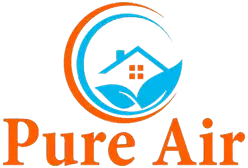
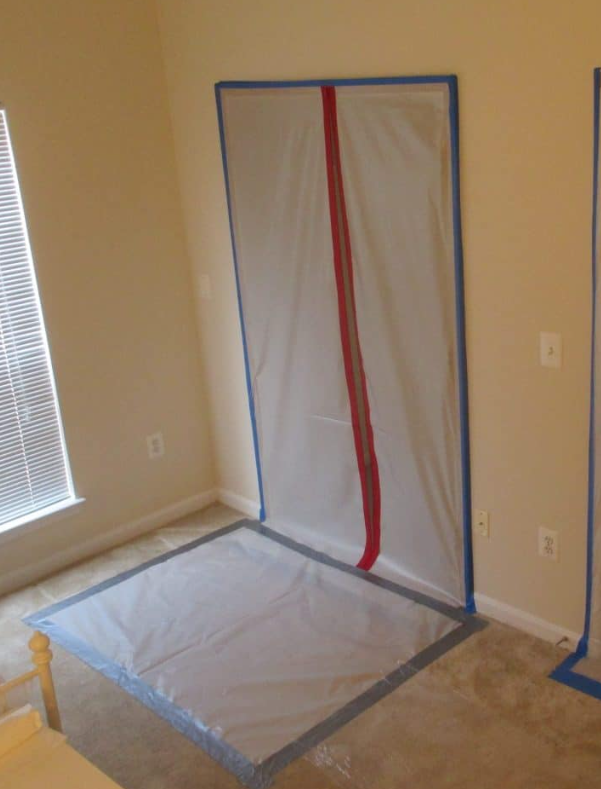
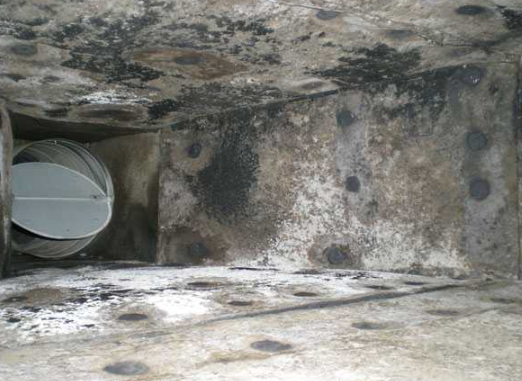
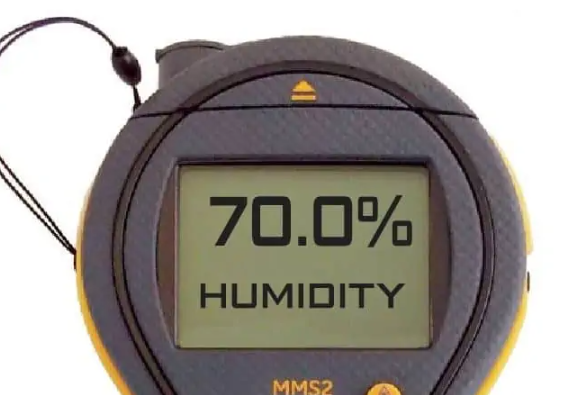

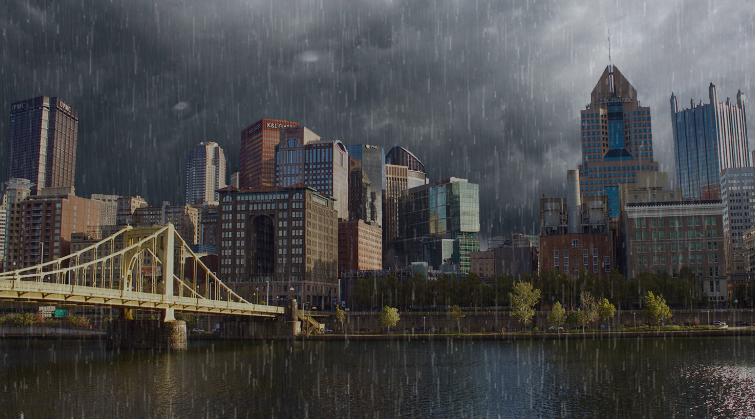
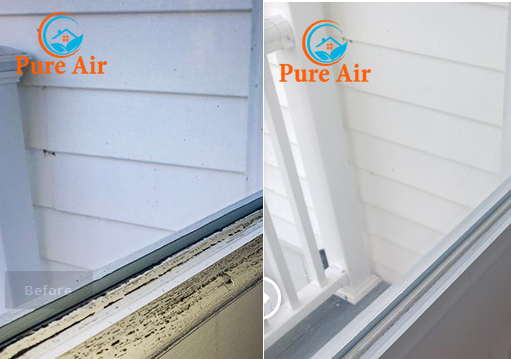
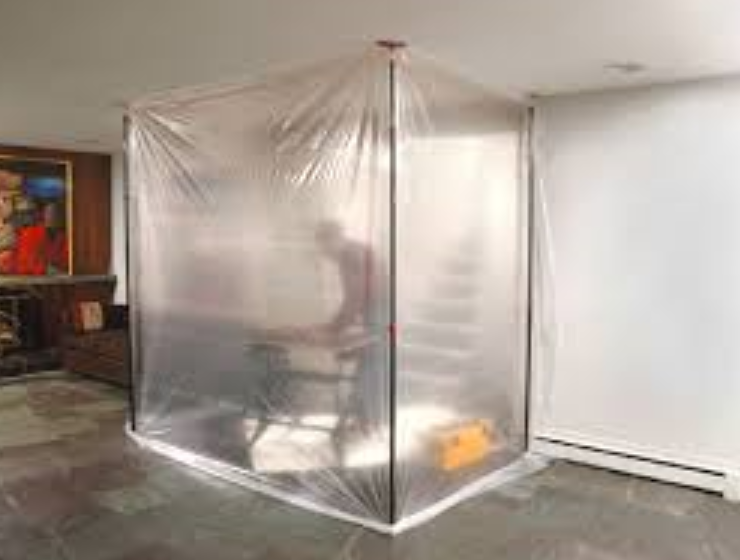
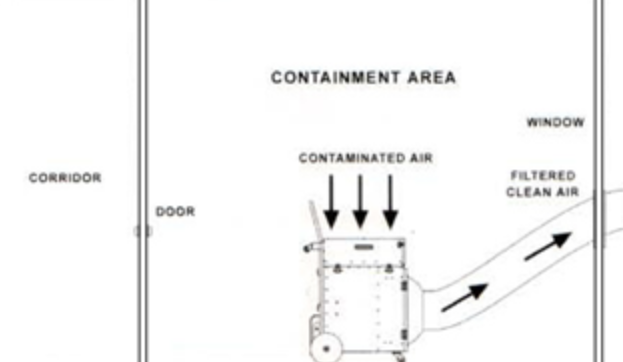
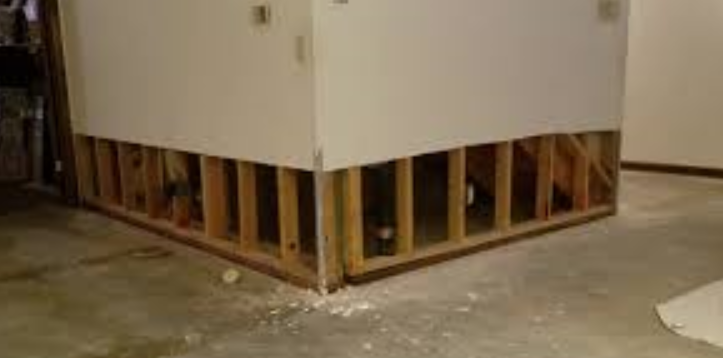

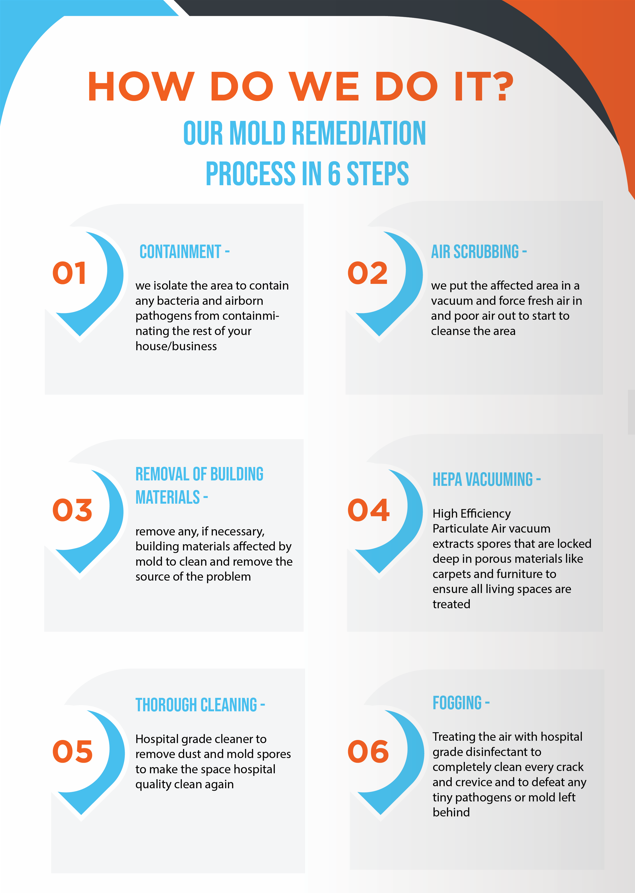

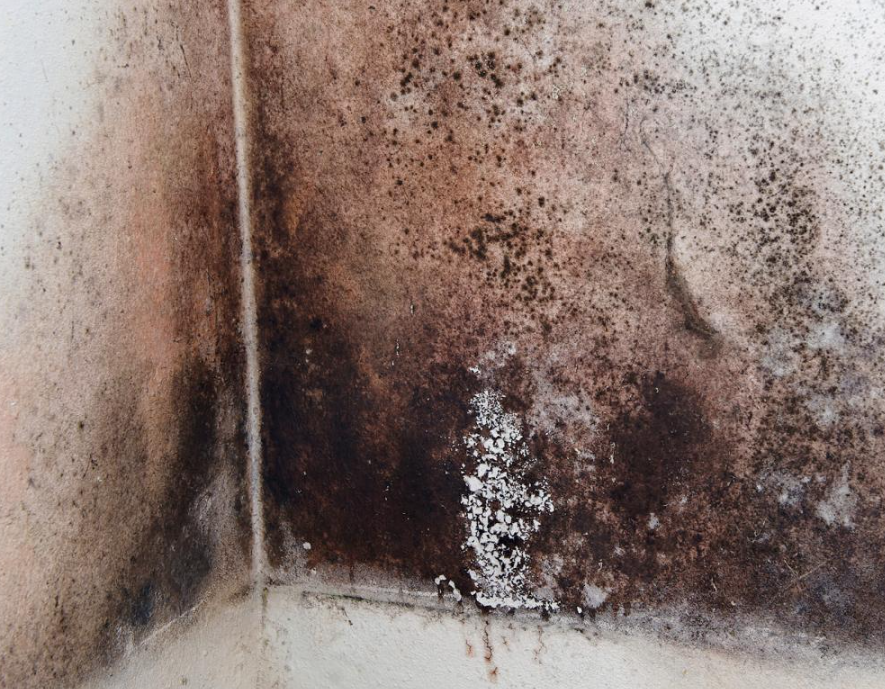
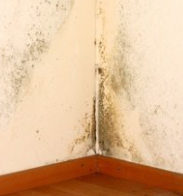
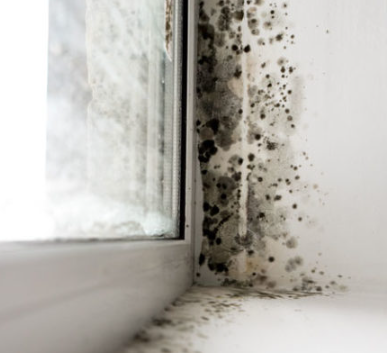

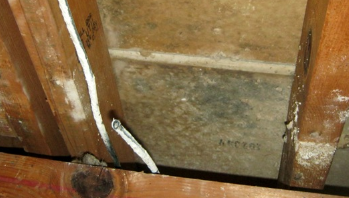
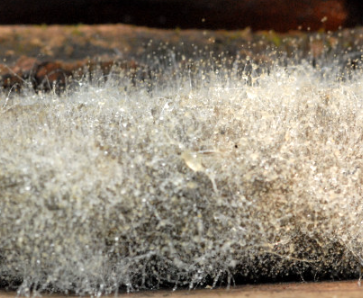
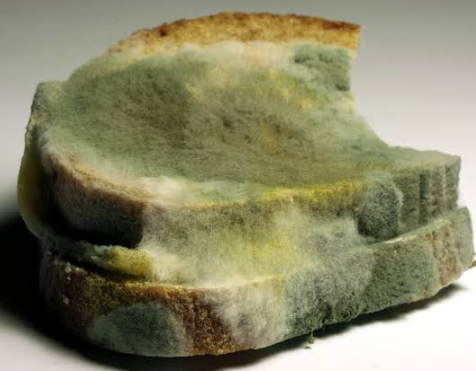

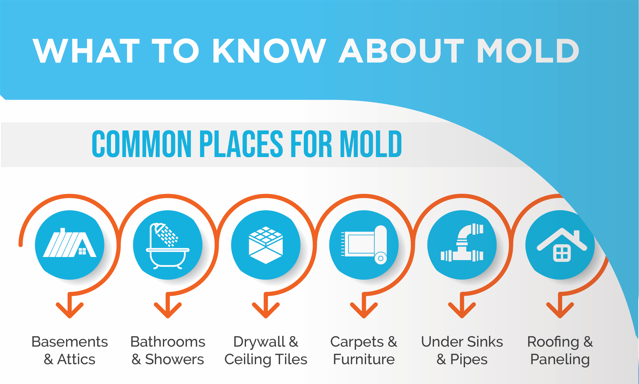
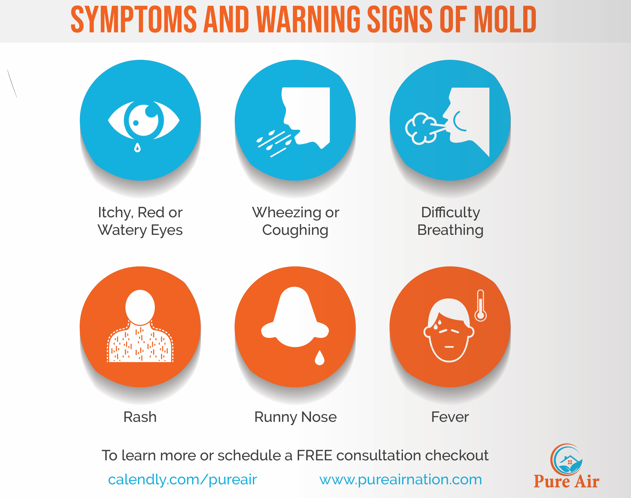

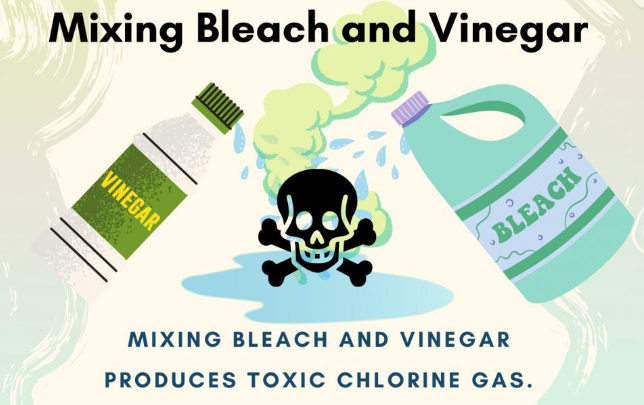

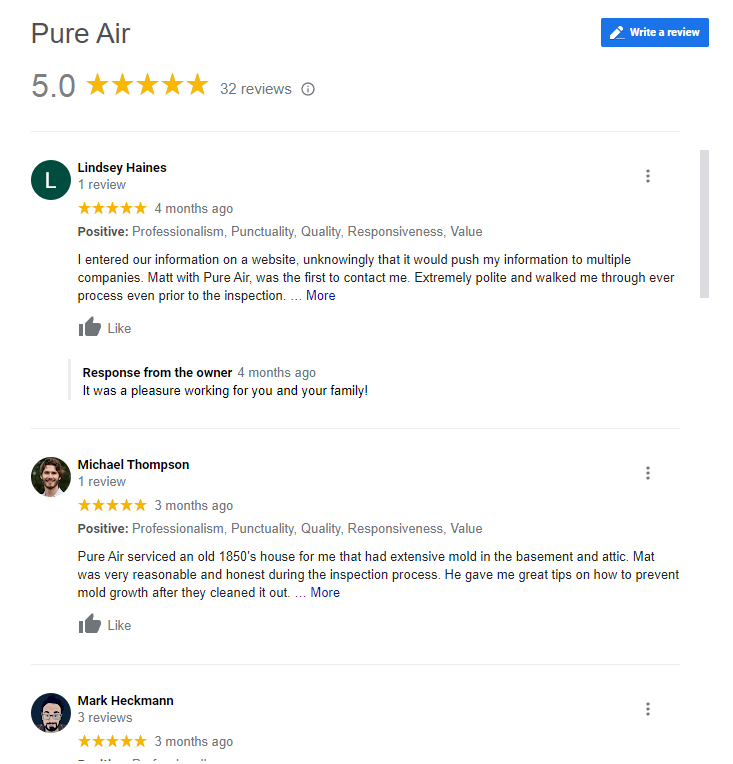
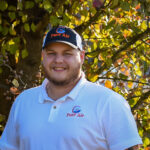

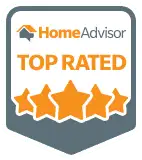
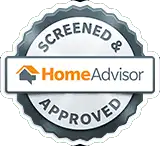
Pingback: Mold Removal: Do Bleach and Peroxide Kill Mold? | Pure Air Nation